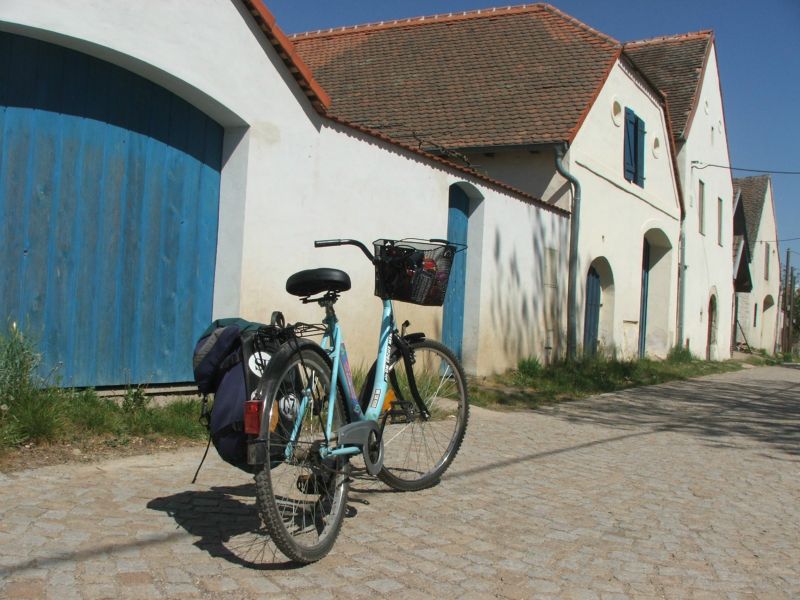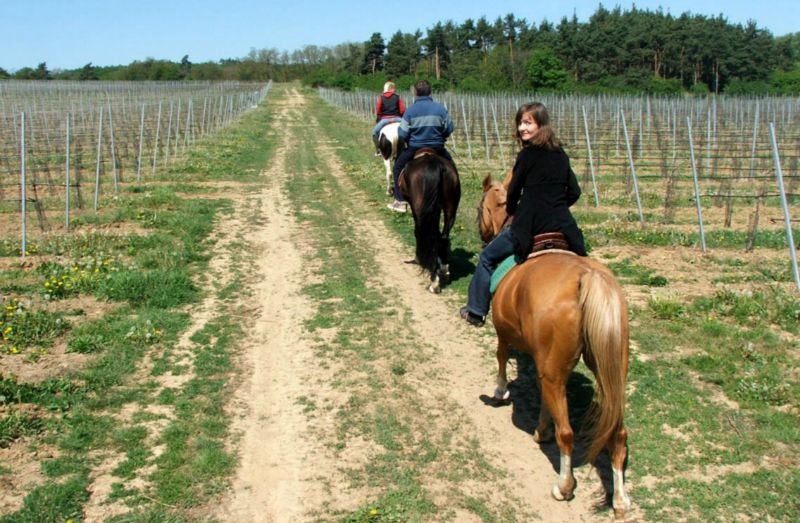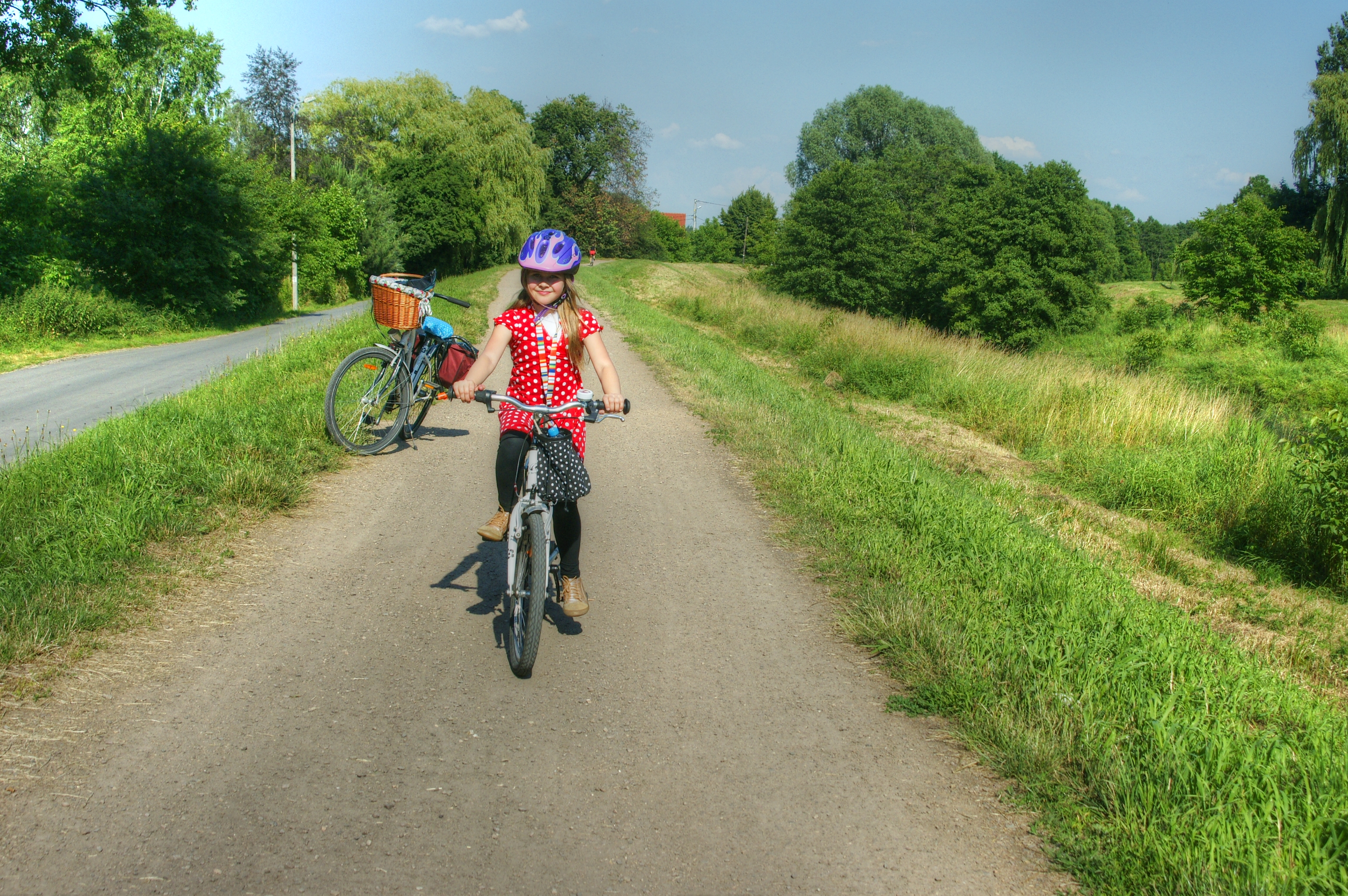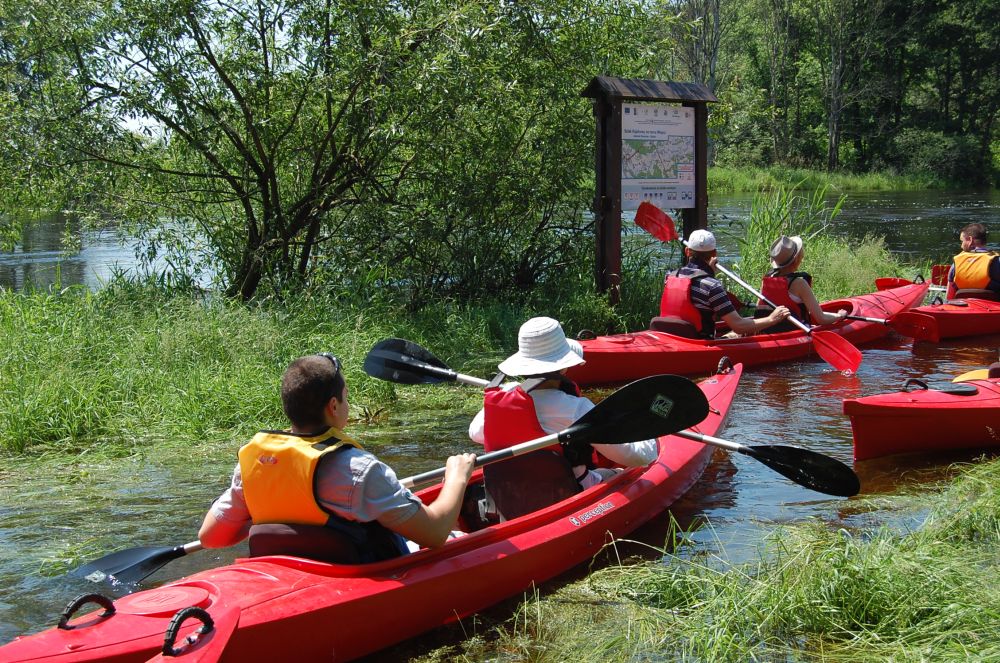Basic elements of a Greenway:
1. Marking out the backbone trail
The main backbone trail links together landscape, natural, cultural and historical attractions. The trail should be served by small infrastructure – rest places, visually consistent information posters with maps and trail logo. Cycle trails should have hardened surfaces with low car traffic. Model greenway trails, which meet western European standards, are built as customized trails which are safe and separate users from car traffic.
2. Signposting a variety of local thematic loops and trails
Local trails and loops are linked to the main backbone trail of the Greenway. These are cycle, walking, horse-riding, water, cross-country skiing, horse-carriage paths and trails. They support recreation, interpretation of cultural and natural heritage and environmental education.
3. Tourism product consistent with sustainable tourism principles
Greenways are available as specialized tourism products both to individual tourists and to organized groups. An important part of any greenway product are tourist-related publications – maps and guides.
4. Partnerships in the region and Greenway coordination
Every Greenway is designed and implemented by a group of partners, comprising non-governmental organizations, local government and business. Partners sign a cooperation agreement, choose the main Greenway coordinator and also local coordinators (in the case of long distance trails).
5. Community initiatives aimed at natural and cultural heritage conservation
A Greenway provides a framework for community-based social projects, undertaken by passionate and creative people – leaders of local non-governmental organization, animators of local culture, artists, folk artists, children and youth, teachers, business people etc.

GREENWAYS CRITERIA
Categories of Greenways /CEG/:
There are 3 major types of Greenways in Central and Eastern Europe:
1.long-distance Greenways
2.local Greenways
3.urban Greenways
C. Criteria of Greenways /CEG/:
There are two levels of criteria: general (applied for all greenways) and specific (applied specifically for each category - long- distance, local and urban greenways).
a) General criteria:
Greenway is a signposted trail characterized by name containing word „greenway“, by a leading theme and logo. Information about greenway is available in form of leaflets/maps/guidebooks, web site and information system along the trail (info panels, kiosks, etc.). Greenway meets satisfactory safety criteria for cyclists and pedestrians and it is developed and continuously managed by a leading coordinator (trail manager, organization, institution, municipality) with assistance of another partners involved. Greenway is part of existing or planned transport master plans and/or tourist network of regions and major municipalities and it is compatible with public transport systems.
b) Specific criteria:
i. Long-distance Greenways
Long-distance Greenways connect countries, regions and major cities. The main purpose of long-distance Greenways is sustainable tourism (typically cycletourism). Long-distance Greenways have to fulfill both infrastructural and functional criteria.
Infrastructural criteria:
a)Greenways link natural and cultural attractions, places of interest/tourist attractions (places of natural, cultural, historical or social value) at least every 15 km;
b)there are rest points at every approx 20 km;
c)there are sites with necessary tourist infrastructure, mainly accommodation and catering, at least every 30 km
d)information about greenway (leaflets, brochures, guidebooks, maps, etc.) are available in information centers in neighboring regions;
e)Greenways lead on safe trails or along quiet roads with low traffic;
f)at least 90% of Greenway has hard, paved surface allowing to ride at any season;
Functional criteria:
a)there is at least 1 info panel in each village/city or tourist attraction Greenway leads through, introducing the site and region;
b)there is at least 1 distribution point of local products (shop, workshop, gallery, etc.);
c)there is at least 1 degustation of local cuisine (meals or drinks) available along the greenway;
d)Greenway offers a possibility to see/visit at least one local community-based initiative, focused on local heritage preservation/interpretation/development;
e)Greenway leads through the centers of villages or cities/towns, or they are easily accessible from greenway by signposted branch/detour;
f)at least 1 tourism product is available for organized tourists offered by local/regional tour-operator.
ii. Local Greenways
Local Greenway is a shorter path typically developed in rural areas. Main purpose of such local greenways is one-day or weekend tourism, heritage and nature interpretation and recreation. They are usually used by hikers, cyclists or both, cross-country skiers, horseback riders, etc.
Criteria:
a) There is at least 1 (if greenway is loop) or 2 (if greenway is not loop) info panel/s.
b) There is at least 1 rest and/or fitness point on the greenway
c) Greenway leads from, to and through village or town centers if applicable
d) Trailheads of local Greenways are accessible by public transportation or are in walking/riding distance from the public transport
iii. Urban Greenways
Urban Greenway is a shared-use trail /cyclists, pedestrians, in-line skaters, people in wheelchairs/ built along rivers, creeks, abandoned railways or natural corridors in urban areas. Main purpose of the urban Greenways is safe mobility, recreation and heritage interpretation.
Criteria:
a)at least 90% of Greenway has hard, paved surface.
b)Greenway is a transport corridor developed along independent routes following disused communication pathways and tracks that are available for non-motorized soft traffic.
c)Slope of a Greenway, either low or zero gradient, allow their use for all types of users, including mobility impaired people.
d)There is at least 1 (if greenway is loop) or 2 (if greenway is not loop) info panel/s.
e)There is at least 1 rest and/or fitness point along the Greenway.

***Criteria worked out by the Evironmental Partnership Association.










